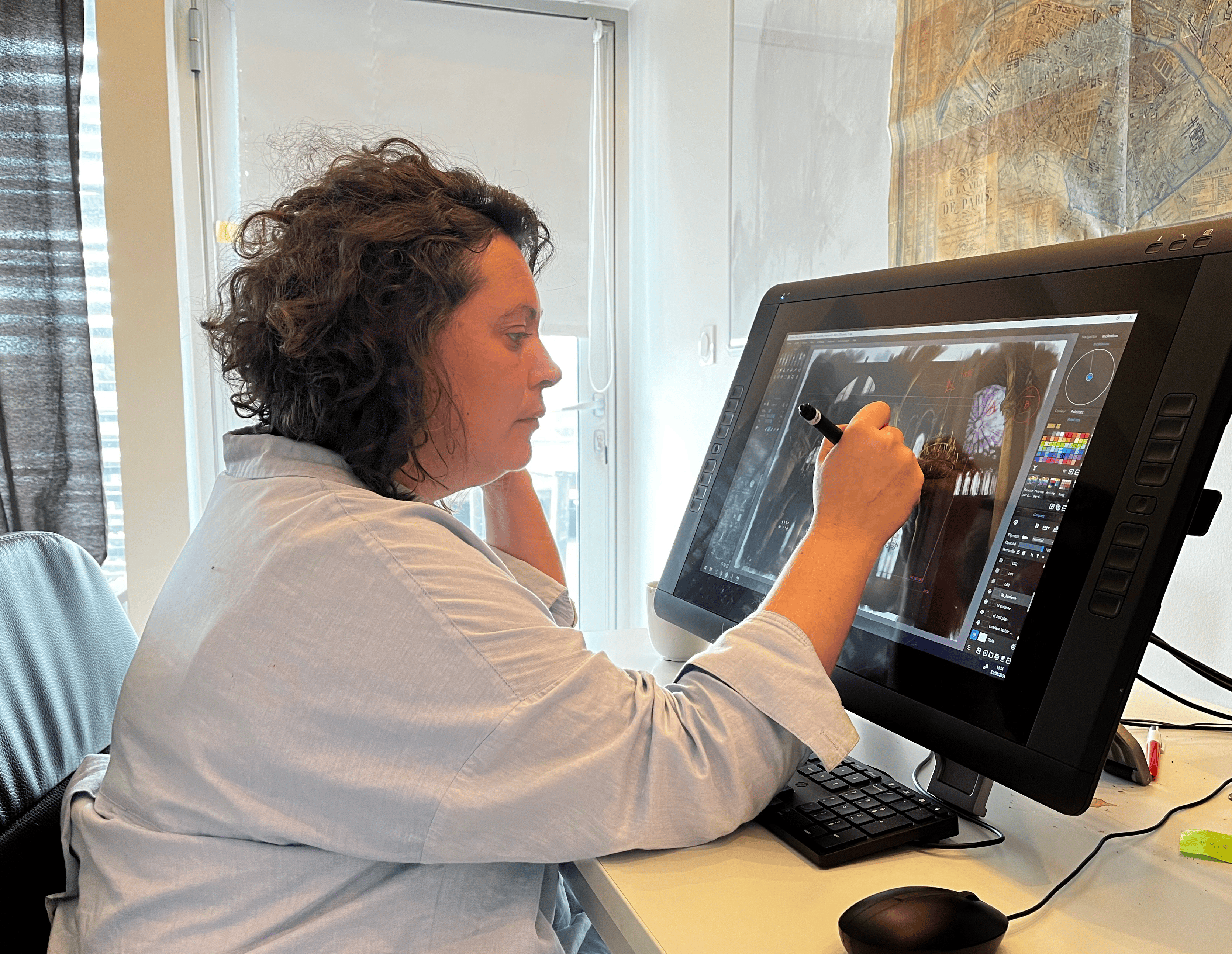We were lucky enough to be able to submit our questions to Amélie Harrault, Director of L'Armée des Romantiques. This 4-episode series, broadcasted on Arte in December 2024, takes an original look at a rich period of artistic creation in France. Here's a look back at the creative process.

What inspired you to tell these stories?
The series “L'Armée des Romantiques” (1827-1874) was born of a desire to shed light on a period of our history that is often overlooked. It tells the story of this period through the eyes of the greatest artists of the 19th-century in France, who revolutionized the history of art and ideas. Victor Hugo, George Sand, Alexandre Dumas, Eugène Delacroix, Hector Berlioz, Charles Baudelaire... all these names sound familiar, but who were they? Before appearing in history books, they were young, rebellious, and full of ideals. Through their lives, their works, their friendships, their struggles, and their rivalries, we wanted to shed light on a bubbling century, which was the prelude to our modern society.
-silex-films-arte-france.jpeg)
How do you set up a project like the “L'Armée des Romantiques”? How long does it take before you can move on to animation?
“L'Armée des Romantiques” is a choral series that combines demanding writing, mixing historical truth and fictional codes, with a rich animation that offers graphic breakdowns. For this original creation, entirely in animation, it took six years of work to write, including the conception of the script, the voice-over, the direction, and the storyboard. I worked closely with my co-writers, Valérie Loiseleux and Céline Ronté.
First of all, Valérie Loiseleux and I boarded on a true investigation: interviewing, comparing, and cross-checking testimonies, writings, biographies, iconographies, articles and newspapers to ensure the historical veracity of the series. Once this solid documentary base had been established, we were able to refine the script with Céline Ronté, using the codes of fiction - narrative arc, dramaturgy, embodiment, cliffhangers - to bring the story to life.
The storyboard was constructed concurrently, by constantly sharing our views, to adapt the writing to the constraints of the economics of an animated series. After five years, we launched the production of the series, which lasted two years, while continuing the writing work right through to the voice-over recordings.
-silex-films-arte-france.jpeg)
What was your aesthetic development process? What were the design steps for the charadesign, the backgrounds, etc.?
The aim was to create an animated series that would blend documentary and fiction, harmoniously combining the period iconography and original creations. Right from the start of the creative process, I consulted thousands of images (paintings, drawings, engravings, sculptures, photographs...) to identify the bases on which I could develop the series' aesthetic. I also wanted to preserve a pictorial rendering that would give me the freedom to adapt the aesthetic aspect according to my writing desires, using different techniques such as oil paint, watercolor, etching, charcoal or Indian ink. I first carried out a phase of visual and technical research during the development of the pilot. It was at this stage that I decided to use Rebelle software to build the backgrounds, and TVPaint for the animation. Given the large number of main characters, who evolve over more than forty years, their development needed several stages: first during the series creation process, then during storyboarding, and finally during manufacturing, where the team worked on posing, in particular making the turns in TVPaint and preparing models for animation.
-silex-films-arte-france.jpg) | -silex-films-arte-france-copie.jpg) |
Le baiser © Silex Films - Arte France | Léopoldine, fille de Victor Hugo © Silex Films – Arte France |
What was the animation process like? At what stages did you use TVPaint?
On “Mademoiselle Kiki et les Montparnos” and “Les Aventuriers de l'Art Moderne”, I still used a lot of traditional paper animation, glass painting and paper cut-outs. For this new series, it was necessary to rethink my method in order to simplify and optimize production. TVPaint Animation quickly became an obvious choice, as it enabled me to obtain different types of rendering: “animated painting”, “traditional animation” or “pen-and-ink”, for example. This enabled me to retain a graphic and artistic sensibility, while remaining consistent with the aesthetic of the time and the subject of the series: artistic creation.
We used TVPaint for the posing, animation and automatic coloring, as well as for the last coloring stage, to add formation and substance, especially a touch of watercolor on the characters.
-silex-films-arte-france-2024.jpg)
Was there a particular TVPaint feature that you found particularly useful on this project?
Yes, the automatic coloring (CTG Layer), which was done at Les Astronautes Studio in Valence, saved us precious time at this stage of the project.
What's your favorite part of the series?
It's hard to say, but I really like the passages with graphic breakdowns, like the Symphonie Fantastique sequence in episode 1, the portrait of Baudelaire in episode 2, or Ratapoil in episode 3...
Where can viewers watch “L'Armée des Romantiques”?
They can watch it on arte.tv.
Any future projects ? On TVPaint perhaps?
I'm still thinking about it, but it will probably be a TVPaint project!





